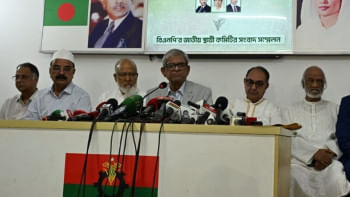Delving into the world of Korra

Everything changed when the Fire Nation attacked. What followed was finding Aang in the iceberg, genocides, Iroh's advice, Zuko's revolutionary redemption arc, and the climactic battle between Team Avatar and Fire Nation punctuated with thematic awestruck music and emotionally charged state of the art animation.
Avatar: The Last Air bender has recently enjoyed a renaissance as it trended as the top Netflix pick breaking the record for a longest consecutive appearance on Netflix's daily top ten list. Following the success of ATLA, Netflix has picked up its sequel, The Legend of Korra as well which has a polarized fan base compared to its predecessor.
First forward 70 years into the future, the new Avatar is Korra, a Southern water tribe member who possesses brute strength and a cocky, brash resolve compared to Aang, the pacifist and much younger monk at the start of the franchise. The series, unlike ATLA, does not have an overarching theme guiding the characters to the final climactic battles, it rather has each season or books, as they are called, have a special theme and villain in it.
The world-building steampunk style
The Legend of Korra (LoK) is set in a much more technologically advanced world, resembling that of industrial Europe teeming with steam engines, futuristic technologies, and nascent factories in expanding cities. Inspired by Victorian England saturated with all sorts of futuristic technology, the series is very different from the rather Asiatic agrarian settings the first series had shown.
The four nations have been integrated into a new autonomous city named Republic City where people of all nations can co-exist with a representative council presenting their interests. In LoK, the resentment takes place between "benders" – those who can manipulate fire, air, earth, and water and "non-benders" – regular citizens who do not have these inborn abilities. Charged with socio-economic themes, LoK highlights the struggle the Korra has to go through to fight the Equalists, led by an ominous and mysterious figure named Amon who can strip away people's bending abilities to create an equal society. Striking parallels to our times, the show highlights the "us vs them" narrative and how policies of exclusion lead to radical violent social movements.
The Avatar Universe has always presented a wide array of nuanced villains who cannot be easily put into a box of labels. Although not all characters get their adequate screen time, the show needs to get props for the presentation of ideologies stemming from familial guilt as is shown in Korra's own family and the socio-political climate that very often breeds extremist violence. One such group of villains are the Red Lotus, the counterpart to the peace-loving White Lotus we encounter in ATLA, who seek to overturn the world systems of control exercised by governments, kings, and socially constructed hierarchies. The Red Lotus sought to unite the spirit and human worlds and eliminate governments, nations, borders and world leaders, including the Avatar.
The series does a rather amazing job when it comes to signalling the chaos of a sudden shift from an established system of governance to one of no direction moulding for more insidious forces to rise in the power vacuum. Very eerily similar to the world we live in.
A different kind of show
It is the last season of LoK that truly delves into the depths of emotional baggage and distress a superhero can carry. For a kids' show, it pushes boundaries of representation as Korra recovers from nightmares and depressive episodes from her previous fights. Amid her 3-year absence, she faces her final villain, a general turned warlord named Kuvira, who saves people in the name of nationalistic fervour putting opponents into concentration camps. The season charts the character development of brash and rough headed fighter into a more mature level headed character bringing the hero in sync with the ideals of the yesteryear Avatar.
LoK is no ATLA, and neither should it be. The show, however, needs to be applauded on many fronts: dark-skinned female hero, many leading female heroes, underlying LGBT themes, socio-political themes and brilliantly choreographed fights. Tapping into the darkest currents of the human experience, the show breaks ground in this regard providing thoroughly nuanced portrayals of the human condition that personifies our world.

 For all latest news, follow The Daily Star's Google News channel.
For all latest news, follow The Daily Star's Google News channel. 




Comments